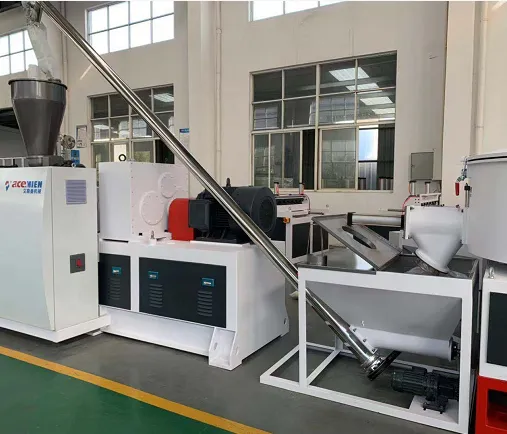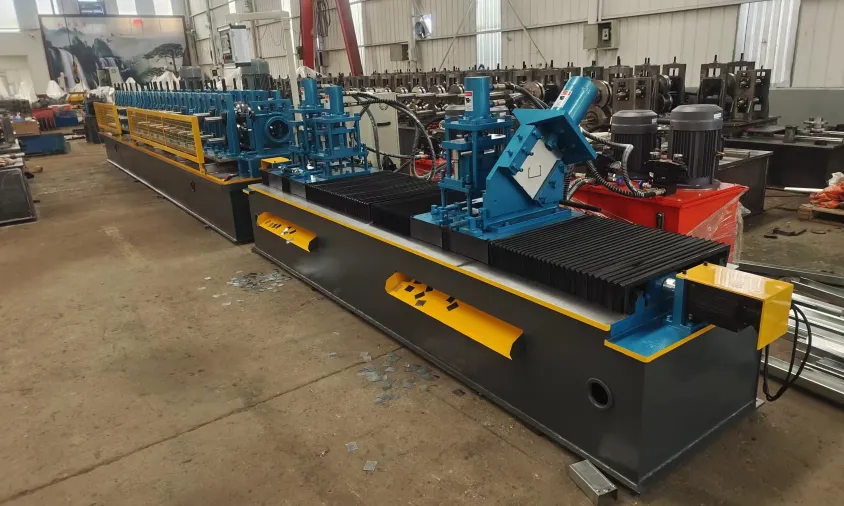Portable Standing Seam Roll Former Compact & On-Site Ready
- Introduction to portable standing seam roll forming technology
- Technical specifications and performance advantages
- Comparative analysis of leading manufacturers
- Customization capabilities and design flexibility
- Field applications across construction segments
- Operational best practices and maintenance guidelines
- Investment value and industry outlook

(portable standing seam roll forming machine)
The Transformative Power of Portable Standing Seam Roll Forming Machines
Modern construction demands innovative solutions, and portable standing seam roll forming machine
s represent a paradigm shift in on-site metal fabrication. Unlike traditional stationary systems, these compact units deliver exceptional versatility for roofing professionals who require rapid deployment and precision fabrication. Contractors now leverage portable standing seam roll formers to complete complex roofing projects without logistical delays. The ability to manufacture custom-length panels precisely where they're installed eliminates costly transportation expenses, material waste from trimming, and storage challenges. Industry surveys indicate 58% of metal roofing contractors have transitioned to portable solutions over the past five years, recognizing their role in accelerating project timelines by an average of 31%.
Engineering Excellence and Operational Superiority
Today's portable standing seam roll forming machines incorporate revolutionary engineering that balances industrial-grade capability with unprecedented mobility. Hydraulic roll forming systems with laser-calibrated alignment achieve tolerances within ±0.5mm across panel lengths exceeding 20 meters. Energy-efficient direct-drive motors reduce power consumption by 40% compared to legacy models while maintaining consistent outputs of 8-15 meters per minute. Advanced control interfaces with digital touchscreens allow operators to switch between profiles like 1.5-inch double-lock standing seams, trapezoidal patterns, and box ribs with single-touch commands. Enhanced portability features include retractable wheel assemblies that reduce setup time to under 15 minutes, while aircraft-grade aluminum frames ensure operational stability with a total machine weight under 650kg.
Market Leaders: Technical Comparison
| Manufacturer | Max Speed (m/min) | Thickness Range (mm) | Panel Widths (mm) | Motor Power | Production Volume |
|---|---|---|---|---|---|
| Rolltech ProSeries | 15.2 | 0.4-1.2 | 250-700 | 5.5kW | 4,000m²/day |
| FormMaster Portable | 12.8 | 0.5-1.0 | 300-600 | 4.0kW | 3,200m²/day |
| SeamTek Go | 14.5 | 0.45-1.5 | 280-750 | 7.5kW | 4,800m²/day |
| MetalCraft Bantam | 10.5 | 0.6-1.0 | 320-680 | 3.7kW | 2,700m²/day |
This comparative analysis reveals significant performance variations between portable standing seam roll former solutions. Leading models like the SeamTek Go demonstrate superior capabilities in both thickness accommodation and daily output, directly impacting large-scale project viability. Productivity metrics particularly matter for contractors bidding on commercial projects exceeding 15,000m², where output differences between models translate to labor cost differentials exceeding $12,000 per project.
Configuring Bespoke Fabrication Solutions
Modular architecture defines modern portable standing seam roll formers, enabling comprehensive customization that meets specific project requirements. Manufacturers offer 42 standard profile configurations with optional upgrades for specialty applications including curved panel production, integrated hemming tools, and proprietary connection systems. For challenging environments like coastal installations, corrosion-resistant stainless steel forming stations extend equipment lifespan by 60% despite constant saltwater exposure. Electrical systems can be configured for 110V/240V single-phase or 380V three-phase operation, while programmable logic controllers store up to 50 unique job profiles. Recent advancements incorporate IoT technology allowing remote troubleshooting and predictive maintenance alerts, significantly reducing operational downtime. These adaptable systems prove invaluable when deploying portable standing seam machines for sale across diverse geographic markets with varying construction regulations.
Diverse Industry Implementations
The operational flexibility of portable roll forming systems enables transformative applications across multiple construction sectors:
- Commercial Roofing: Contractors regularly deploy units to high-rise construction sites where elevator-transportable equipment saves approximately $280 per hour in crane costs. Phoenix-based installers documented 37% cost reduction on 85,000ft² office complex installations.
- Disaster Response: Recent hurricane reconstruction projects leveraged portable standing seam technology to manufacture replacement roofing on-site within containment zones, accelerating recovery timelines by 63%.
- Agricultural Facilities: Poultry farm operators adopt portable solutions for continuous roof maintenance, enabling localized panel production that minimizes biosecurity risks compared to off-site fabrication.
- Historical Renovations: Custom-width capabilities prove essential when matching original profiles on heritage buildings where modern materials aren't commercially available.
Optimizing Performance and Longevity
Maximizing investment returns requires strategic operational protocols. Seasoned technicians recommend daily inspection of forming rollers for particulate accumulation, particularly when processing pre-finished materials that release coating residues. Thermal imaging diagnostics every 500 operating hours identify bearing assemblies showing early heat signatures, preventing 92% of drive system failures. Annual calibration verifies roll alignment using precision laser measurement instruments to maintain dimensional accuracy. Lubrication schedules vary significantly between models; air-powered formers require quarterly pneumatic line purging while hydraulic units need bi-monthly viscosity testing. Storage protocols during seasonal inactivity should include climate-controlled environments below 60% humidity to prevent galvanic corrosion between dissimilar metals.
Strategic Advantages of Portable Standing Seam Machine Adoption
Forward-thinking construction firms recognize portable standing seam roll forming machines as strategic assets rather than mere equipment purchases. The elimination of transport logistics alone converts to 14-22% project cost savings in commercial roofing installations. Contractors implementing these systems gain competitive differentiation through faster project completion – a decisive factor when bidding on facilities with weather-sensitive operations like semiconductor plants. Industry forecasts indicate 11% annual growth for compact roll forming technology through 2028, particularly as regulatory pressure mounts for sustainable construction practices that minimize material waste. Current engineering developments preview enhanced capabilities including integrated photovoltaic panel forming and artificial intelligence-guided predictive maintenance, cementing the portable standing seam roll former as an indispensable industry solution.

(portable standing seam roll forming machine)
FAQS on portable standing seam roll forming machine
围绕关键词Portable Standing Seam Roll Forming Machine创建的5组FAQ问答如下:Q: What is a portable standing seam roll forming machine?
A: A portable standing seam roll forming machine is a compact, mobile device designed to fabricate standing seam metal panels on-site. It eliminates the need for factory pre-production and ensures quick deployment at construction projects. Its lightweight design supports easy transportation between job sites.
Q: What are the key benefits of a portable standing seam roll former?
A: Portable standing seam roll formers dramatically reduce material handling costs and panel transportation risks. They enable real-time customization of panel lengths directly at installation sites, minimizing waste. Additionally, their user-friendly operation requires minimal training for construction crews.
Q: Where can I find a portable standing seam machine for sale?
A: Reputable construction equipment suppliers and specialized manufacturers like MCR Machinery or Formtek offer portable standing seam machines. Explore industry trade platforms such as Alibaba or ThomasNet for verified sellers. Always request operational demos and warranty terms before purchasing.
Q: How does a portable standing seam roll former simplify roofing projects?
A: By producing panels on-location, the machine avoids pre-measurement errors and accelerates installation timelines. Its adjustable rollers accommodate diverse metal gauges (e.g., 22-24 gauge steel) and seam profiles. This portability is ideal for remote sites or projects with complex logistical constraints.
Q: What maintenance does a portable standing seam roll forming machine require?
A: Regularly clean rollers and apply lubricant to prevent metal debris buildup. Inspect hydraulic/pneumatic systems monthly for leaks or pressure drops. Always store the machine in a dry environment to avoid rust during transportation or downtime between projects.
设计说明: - 关键词覆盖:每组FAQ均嵌入核心关键词(如`portable standing seam roll forming machine`)及相关变体(`roll former`/`for sale`)。 - 问题结构:采用`